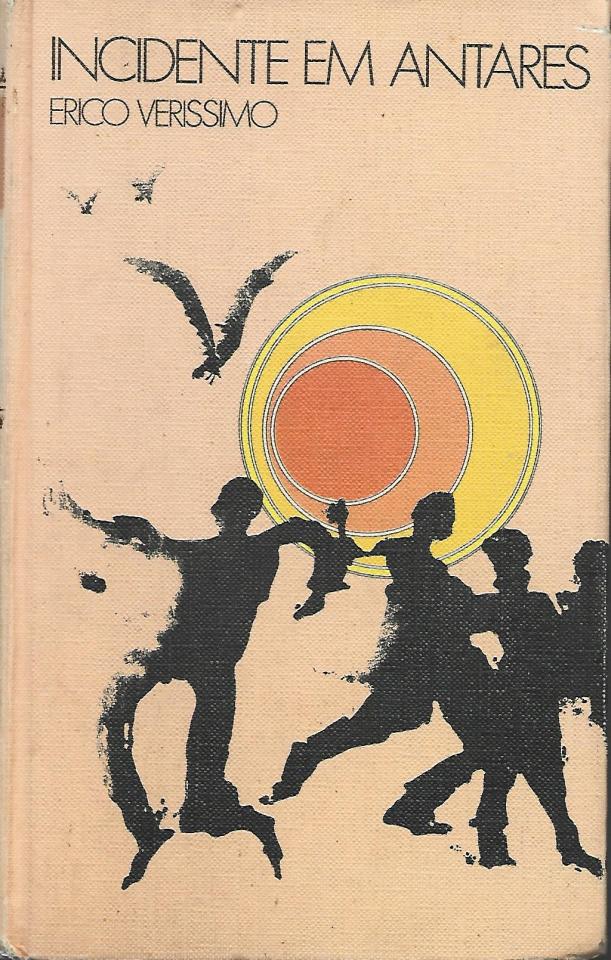#érico veríssimo
Text
É indispensável que conquistemos este mundo, não com as armas do ódio e da violência e sim com as do amor e da persuasão.
Érico Veríssimo, Olhai os Lírios do Campo
6 notes
·
View notes
Text
Lembro-me de que certa noite – eu teria uns quatorze anos, quando muito – encarregaram-me de segurar uma lâmpada elétrica à cabeceira da mesa de operações, enquanto um médico fazia os primeiros curativos num pobre-diabo que soldados da Polícia Municipal haviam ‘carneado’ (...) Apesar do horror e da náusea, continuei firme onde estava, talvez pensando assim: se esse caboclo pode aguentar tudo isso sem gemer, por que não hei de poder ficar segurando esta lâmpada para ajudar o doutor a costurar talhos e salvar essa vida? (...)
Desde que, adulto, comecei a escrever romance, tem-me animado até hoje a ideia de que o menos que o escritor pode fazer, numa época de atrocidades e injustiças como a nossa, é acender a sua lâmpada, fazer luz sobre a realidade de seu mundo, evitando que sobre ele caia a escuridão, propícia aos ladrões, aos assassinos e aos tiranos. Sim, segurar a lâmpada, a despeito da náusea e do horror. Se não tivermos uma lâmpada elétrica, acendamos o nosso toco de vela ou, em último caso, risquemos fósforos repetidamente, como um sinal de que não desertamos de nosso posto.
2 notes
·
View notes
Text
@themousefromfantasyland @sabugabr @gravedangerahead
"Estou convencido de que meu primeiro contato com a música, o canto, o conto e a mitologia se processou através da primeira cantiga de acalanto que me entrou pelos ouvidos, sem fazer sentido em meu cérebro, é óbvio, pois a princípio aquele conjunto ritmado de sons não passava dum narcótico para me induzir ao sono. Essa canção de ninar falava no Bicho Tutu, que estava no telhado e que desceria para pegar o menino se este ainda não estivesse dormindo. Mas se ele já estivesse piscando, com a areia do sono nos olhos, a letra da cantilena era diferente: uma advertência ao Bicho Tutu para que não ousasse descer do telhado, pois nesse caso o pai do menino mandaria matá-lo. E aí temos sem dúvida uma enfabulação ou estória, uma melodia e um elemento mitológico. Amas e criadas encarregaram-se de enriquecer a galeria mitológica da criança, contando-lhe estórias fantásticas, de caráter francamente sadomasoquista como aquela da madrasta que mandou enterrar vivas as três enteadas. (Ouço uma voz remota exclamar: "Xô, xô, passarinho!...".) Dessa história das meninas enterradas - Capineiro de meu pai/não me cortes os cabelos/minha mãe me penteou/minha madrasta me enterrou... - guardo mais o terror que ela me inspirou do que o seu enredo. Por essa época a criança já caminhava, e a fita magnética de sua memória estava ainda praticamente virgem, pronta para registrar as impressões do mundo com suas pessoas, animais, coisas e mistérios. Através de estórias de cemitérios à meia-noite, meteram-me na cabeça e no corpo o medo da "alma de gato", um duende cuja forma e cor nunca me foram claramente revelados. Havia ainda o lobisomem, que costumava sair à rua nas noites de sexta-feira. Quanto aos contos de assombrações, o meu favorito era o do bravo homem que apostou com um amigo que passaria uma noite sozinho numa casa mal-assombrada. Ao anoitecer tocou-se para lá e sentou-se numa velha cadeira, na peça onde o fantasma costumava aparecer. Ao soar da meia-noite ouviu uma voz soturna que gemia: "Eu caio... Eu caio... Eu caio...". O valentão gritou: "Pois caia!". E do teto escuro tombou uma perna humana, com um baque surdo. (E a contadora da estória fazia "Buum!", sem imaginar, é claro, que estivesse alimentando com seu relato de horror um mal emplumado masoquista.) Passaram-se segundos e de novo se ouviu a mesma voz: "Eu caio..." O homem tornou a responder: "Pois caia!". E caiu então a segunda perna. O horripilante diálogo continuou e foram caindo, um a um, o tronco, os braços e finalmente a cabeça de um ser humano, que assim ficou completo. É uma pena que eu não me lembre o agora do resto da estória. Sinto muito!"
(Érico Veríssimo, Solo de Clarineta, p. 60-61, 1973)
#Érico Veríssimo#literatura#brasil#foclore#contos populares#contos de fadas#fábulas#solo de clarineta
7 notes
·
View notes
Text
GUIA DO LEITOR: Incidente em Antares, de Érico Veríssimo
Leitura iniciada em 04 de janeiro.
Leitura concluída em 20 de fevereiro.
TRECHO
O presidente do Lions ergue a mão como um aluno que pede ao mestre licença para falar durante a aula. Vivaldino faz com a cabeça um sinal de consentimento.
— Eu estava na igreja quando o nosso apreciado padre Gerôncio anunciou o Juízo Final. Confesso que a princípio fiquei alarmado, com vontade de sair correndo…

View On WordPress
0 notes
Text

"A vida vale a pena ser vivida apesar de todas suas dificuldades, tristezas e momentos de dor e angustia. O mais importante que existe sobre a face da terra é a pessoa humana. E surpreender o homem no ato de viver é uma das coisas mais fantásticas que existe."
Érico Veríssimo.
46 notes
·
View notes
Text
A vida começa todos os dias.
Érico Veríssimo ✍
🍃🌺🍃🌺🍃🌺🍃🌺🍃🌺🍃🌺🍃
31 notes
·
View notes
Text

[ Para Todos Verem: Fundo azul com um canto verde e outro amarelo, com texto em amarelo com borda branca no centro, que diz: Torneio Brasileiríssima.]
Masterpost com as informações do torneio.
Compartilhem, por favor, e se fizerem campanha, me marquem e eu reblogo com a tag boca de urna 🥰
74 notes
·
View notes
Text

A gente foge da solidão quando tem medo dos próprios pensamentos.
✓Érico Veríssimo ✍️
96 notes
·
View notes
Text
Thanks to @cafeleningrad for tagging me! I haven't done one of those (or been much on tumblr at all) in a while, but I always like them!
3 ships you like: I'm currently very into Moshang (The Scum Villain's Self-Saving System), a little bit less so into Nieyao (MDZS), and I'm always a Throbb bitch.
First ship ever: I've always loved shipping even before I knew what it was, but the first I remember having intense feelings of 'oh, i want to smash them together forever' was with Sakura and Syaoran from Sakura Card Captor.
Last song you heard: This The Wind Blows cover.
Favourite childhood book: I don't think I had a favorite one, I hardly reread things, but I remember that The Mists of Avalon, by Marion Zimmer Bradley made an impression on me. Not a kid book, but I read it while I was a kid.
Currently reading: Putting myself through Incidente em Antares (An Incident at Antares, in a poor translation by me), by Érico Veríssimo. I'm about halfway done (read 130 pages or so) and I'm annoyed at how much I don't like it so far while it should be perfectly to my tastes on paper. This has been a trend lately. I don't like that author in general, but it was the closest fiction novel at hand and I wanted a physical book.
Currently watching: Nothing in particular. I want to watch The Terror just from how much I've seen it on my dash. And HotD again before season 2 starts.
Currently consuming: As in, food? Digital "content?. Neither, at the moment.
Currently craving: Energy :'(
I'm tagging @omgellendean, @salty-wench, @evax3, @st-clements-steps and whoever else wants to!
3 notes
·
View notes
Note
Qual é o teu livro favorito de momento?
justamente o que eu estou terminando de ler: o continente, do érico veríssimo (é a primeira parte de o tempo e o vento).
escrita maravilhosa, uma história tão bem construída… BELO!
3 notes
·
View notes
Note
Você poderia recomendar livros?
aaah, fiquei tão feliz de receber essa ask! seguem títulos que marcaram um pouco da minha vida:
Infanto-juvenil:
Anne de Green Gables, L.M. Montgomery
A Cor da Ternura, Geni Guimarães
Jogos Vorazes, Suzanne Collins
Coleção Salve-se Quem Puder (juro, esses livros moldaram minha infância).
Desventuras em Série (só li um ou dois, mas quero ler todos quando puder), Lemony Snicket.
Romance:
O Morro dos Ventos Uivantes (esse é pra quem gosta de fofoca), Emily Bronte
Orgulho e Preconceito, Jane Austen
O Continente (tem romance, ação, aventura, mitologia), Érico Veríssimo
Torto Arado, Itamar Vieira Jr
As Ondas, Virginia Woolf
As Parceiras (triste), Lya Luft
Terror/Sobrenatural:
A Certain Slant Of Light (não sei se tem traduzido), Laura Whitcomb
Histórias Extraordinárias, Edgar Allan Poe
Ficção:
1984 (esse tem umas partes pesadinhas) e A Revolução dos Bichos, George Orwell
Biográfico:
O Carteiro e o Poeta (fala sobre o Pablo Neruda), Antônio Skarmeta
Crônicas:
Crônicas para se ler na escola (comédia), Luis Fernando Veríssimo
O Livro dos Abraços, Eduardo Galeano
Romance/Drama para maiores de 18:
O Caso Morel, Rubem Fonseca
O Amante (triste, triste, triste), Marguerite Duras
Lolita (pesadíssimo, mas é um dos livros mais bem escritos que já li), Vladimir Nabokov
7 notes
·
View notes
Text
TOP 05 FAVORITE TYPES OF STORIES
@faintingheroine @storytellergirl @princesssarisa @softlytowardthesun @the-blue-fairie @themousefromfantasyland @superkingofpriderock @metropolitan-mutant-of-ark @captain-dad @angelixgutz @parxsisburning @amalthea9 @darasuum @marquisedemasque @filmcityworld1
01. The Search for the Lost Husband and The Persecuted Lady


Those are considered the two most widespread kind of folktales. What personally touches me the most about these stories is how they explore the resilience of its female heroines, wich we often underestimake as weakness in real life women.
The Search for the Lost Husband touches on the anxiety about arranged marriages, and how women feared they would be sold by their fathers to wild, monstrous beasts, specially because their husbands are full of secrets. Them the heroines break a taboo, discovering the secret, wich makes the husband depart full of fears and insecurity, while the heroine, having grown in love for the husband, reveals courage and confidence to go in a long, dangerous journey to, now in her own terms, win back her beloved. Rather than end the narrative with the marriage celebrations, this kind of story explores what it takes to keep the marriage.
The Persecuted Lady touches in the domestic drama of women who suffer familial abuse, be it the work force exploitation imposed by a stepmother, the appearance shaming imposed by a birth mother, the sexist neglect of a father or grandfather, or the sexual harassment committed by a father. In some tales, the heroines suffer in silence at their own homes, in others, usually under a disguise that makes her look ugly by societal standards (like a straw coat or an animal’s skin), she runs away and works in servitude in another place, also suffering abuse from the employers, until she has the chance to enjoy at least three festive occasions and catch the eyes of a handsome and young rich suitor (usually a Prince), who uses a piece of garment like a shoe or ring to identify the heroine and marry her. The heroine has a long time to cope with harsh situations, but keeps hopefull for better days, and finds the love and happiness that she didn’t had back at home.
My favorite Search for the Lost Husband tales are The Black Bull of Norroway, The Singing Springing Lark and The Iron Stove. My favorite Persecuted Lady tales are Dona Labismínia, Bicho de Palha, Maria Borralheira, Donkeyskin, Thousand Furs, Princess in a Leather Burqa, Florinda, The Three Sisters, The Tale of Popelka, Tattercoats and Cap’O Rushes.
02. The Story Inside the Story

This is when one character presents a fictional narrative to another character, and the narrative presented is just as engaging as the in universe “real” characters we have been accompanying. Sometimes the characters are just amusing themselves with a fun story, and other times the story has a thematic moral relevance to the “real life” situation they are living. The Story Inside the Story can take the form of A Book Within the Book, A Play Within the Play, A Movie Within the Movie, and so forward. The most famous example, and still my favorite, of Story Inside the Story is probably the One Thousand and One Nights book. Other famous examples include Geoffrey Chaucer’s Canterbury Tales and Giovanni Boccacio’s Decameron.
03. The Family Saga

When the story stars being about a character, them this character dies and we move on to see the story of that character’s children, grandchildren, great-grandchildren, all the while we see their different points of view about the political, cultural and societal changes troughout history. My favorite Family Sagas are the myth of The Mahabharata, the myth of King Arthur, Shakespeare’s Henriad and Rose Tetralogy cycle of plays, Érico Veríssimo’s novel Time and the Wind and Gabriel Garcia Marquez’s novel One Hundred Years of Solitude.
04. The Band of Heroes in a Quest

A group of people who in normal circumstance unlikely would meet and talk to each other is united by fantastical circunstances to go on a quest. The object of the quest varies: it could be a treasure, a search for spiritual enlightment, save an innocent in distress, destroy a cursed artifact or eliminate an ancient evil and save the world they know from doom.
My favorite examples Band of Heroes in a Quest are probably the Vampire Hunters from Bram Stoker’s Dracula novel, the Fellowship of the Ring from Tolkien’s Lord of the Rings novel and the Bronze Saints from Toei’s Saint Seiya anime.
05. Deal with the Devil

A human being who makes a deal, out of either desperation or pure ambition, promising his soul to the Devil. Sometimes the deal is selling the soul right away, other times the deal is a bet, where if the human fails at accomplishing a task, the Devil will take their soul to suffer eternally in Hell. We accompany the main character’s journey as he asks: should I use what the Devil gaved me for my own benefit, or should I use it to help other people in need? If I use it to help people in need, so I am redeemed, or my deal with the Devil will forever tarnish me as an evil person? Was I wise in making this deal? Is the Devil truly evil, or is he just testing the evil I may have inside me?
There are two ways in wich this story ends: either the main character escapes with his soul redeemed (usually by a loophole in the contract) or he has sank so low in doing evil deeds that the Devil wins and takes his soul to Hell. The most famous example of a Deal with the Devil kind of story is the german myth of Doctor Faust.
#tumblr mutuals#fandom musings#pop culture#literature#one thousand and one nights#one hundred years of solitude#time and the wind#il decameron#the canterbury tales#the singing springing lark#the black bull of norroway#the iron stove#cap o' rushes#tattercoats#thousandfurs#all kinds of fur#allerleirauh#the mahabharata#faust#folklore#fantasy#mithology
45 notes
·
View notes
Text

(...) Olha as estrelas. Enquanto elas brilharem haverá esperança na vida.
— Érico Veríssimo, no livro "Olhai os Lírios do Campo". (Ed. Globo; 1.ª edição [1974]).
Obra: "The Starry Night", 1889 - Vincent van Gogh.
3 notes
·
View notes

